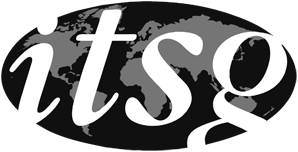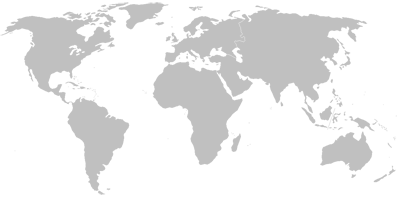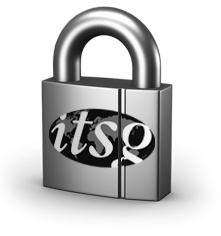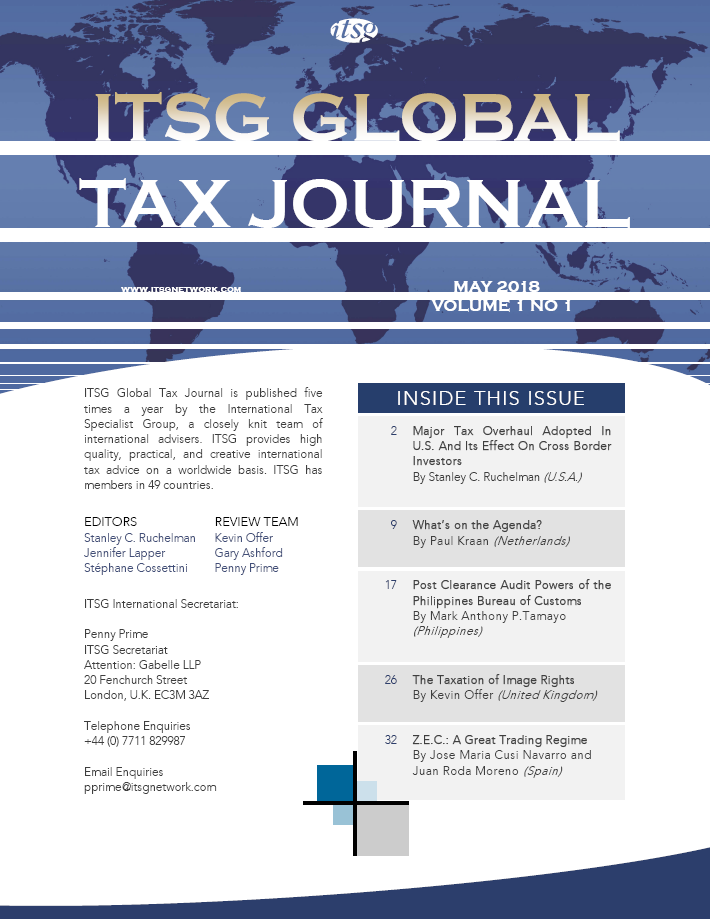The Philippine Bureau of Customs (B.O.C.) has recently revived its Post Clearance Audit Group (P.C.A.G.) that conducts compliance audits on importers’ records of importation relating to their past shipments of goods to the country.
Said compliance audit is essentially a control mechanism done at the back-end of cargo clearance. It aims to facilitate trade by generally allowing release of low risk imports with minimum customs intervention at the border. The B.O.C., however, retains the option to verify the truthfulness and accuracy of goods declarations by looking at the pertinent records of the importer-auditee.
The Post Clearance Audit1 (P.C.A.) was introduced2 in the Philippines in 2001 and was originally carried out by the B.O.C. Post-Entry Audit Group3 (P.E.A.G.). During its time, the P.E.A.G. was able to contribute quite significant revenue collections from its conduct of P.C.A. which resulted in payment of additional duties and taxes arising from deficiency assessments, penalties and voluntary disclosures from importers.
Towards the end of 2013, the P.E.A.G. was dissolved under Executive Order (E.O.) No. 1554 and its functions were transferred to the Fiscal Intelligence Unit (F.I.U.) under the Department of Finance (D.O.F.) with a primary role of conducting an independent audit on importers with the end goal of further boosting revenues. As there were uncertainties and grey areas in the implementation of subsequent D.O.F. issued rules and procedures, the objectives of E.O. 155 were purportedly not fully met.
Accordingly, the Customs Modernization & Tariff Act5 (C.M.T.A.), which took effect last June 16, 2016, reverted to the B.O.C. the power to examine and audit a company’s books and import records.
E.O. 46 series of 2017 (signed last October 20, 2017), as implemented by Customs Memorandum Order (CMO) No. 32-20176, created an empowered post clearance audit group (P.C.A.G.) that is expected to aggressively commence its customs audit as soon as the forthcoming implementing rules and regulations on P.C.A. are issued.
The P.C.A.G., which is directly under the supervision of the B.O.C. Commissioner, is headed by a B.O.C. Assistant Commissioner who shall exercise direct supervision and control over the management of its operating units, which include the Trade and Information and Risk Analysis Office (which recommends to the B.O.C. Commissioner potential priority audit candidates) and the Compliance Assessment Office (which conducts the actual audit).
The P.C.A.G. is mandated to conduct an audit examination, inspection, verification and investigation of records pertaining to any goods declaration within three years from the date of final payment of duties and taxes or customs clearance. This shall include statements, declarations, documents, and electronically generated or machine-readable data, for the purpose of ascertaining the correctness of the goods declaration and determining the liability of the importer for duties, taxes and other charges, including fine or penalty.
Criteria for Audit Selection
With the C.M.T.A.’s goal of facilitating the easier flow of goods, a great deal of responsibility is placed on the importers. Importers are responsible for declaring the details of their imports such as, among others, the value, classification, and rate of duty applicable to imported goods. Compliance with the rules, on the other hand, is checked by the B.O.C. either at the border or through the P.C.A. system.
The importers targeted for P.C.A. are selected based on a “computer-aided risk management system” that takes into consideration the highest level of risk to (and the greatest impact upon) customs revenue and other priority objectives of the administration.
The selection criteria are based on, but not limited, to the following:
- Relative magnitude of customs revenue from the firm
- The rates of duties of the firm’s imports
- The compliance track record of the firm
- An assessment of the risk to revenue of the firm’s import activities
- The compliance level of trade sector
- Non-renewal of an importer’s customs accreditation
Customs brokers may be audited to validate audits of their importer-clients and/or fill in information gaps revealed during an audit of their importer clients. Locators in the Economic Zones and those enjoying duty and tax incentives are likewise not exempt from B.O.C. compliance audit.
Once selected for P.C.A. by the B.O.C., the audit process will be triggered by the issuance of a B.O.C. Audit Notification Letter7 (A.N.L.) sent to the importer-auditee.
The coverage of the compliance audit is 3 years (10 years in case of fraud) from the date of the A.N.L. counted backwards.
Areas of anticipated customs issues
The main aim of the P.C.A. is to verify a company’s past import transactions for the purpose of determining whether the:
- Value of the imported goods declared by the importer is correct and reflected the price actually paid or payable by the importer to the supplier;
- Required dutiable8 adjustments are included thereto;
- Imported goods are valued using the appropriate customs valuation method;
- Goods are properly described, and the correct tariff classifications are used;
- Quantities of goods, as reported, are correct;
- Declarations as to country of origin are correct
- Special or preferential tariff rates are correctly applied, and importer is qualified to avail of special/ preferential rates;
- Required import records are kept; and
- Other compliance requirements a met.
Apart from the above focus areas, the B.O.C. also, as a matter of procedure, compares specific figures contained in an auditee’s records with that of their own data. Discrepancies would usually require the submission of a reconciliation document from the auditee.
Any deficiency duty assessment issued by the B.O.C. after audit would normally include a deficiency V.A.T. (on importation) assessment since the import V.A.T. base, under the rules9, includes, as components, the dutiable value10 and customs duty. Thus, any under declaration of customs duty shall, as a consequence, result to undervaluation of the V.A.T. and vice versa.
Transaction Value of imported Goods
Section 70111 of the C.M.T.A. reiterated the adoption of the World Trade Organization (W.T.O.)12 “Transaction Value” (T.V.) system as basis for valuing imported goods for duty purposes.
Generally, in an arm’s length transaction, imports shall be assessed using the Transaction Value (T.V.) of the imported article (Method 1). However, when a higher comparable value exists to cast reasonable doubt13 as to the truthfulness or accuracy of a given value declaration and the subsequent verification done establishes that any of the elements or conditions of Method 1 is not present or complied with, the importation shall be assessed using the alternate methods of valuation in their order of priority: (Method 2—transaction value of identical goods; Method 3 —transaction value of similar goods; Methods 4—deductive method; Method 5—computed value subject to reversal of Methods 4 and 5 at the option of the importer if it can be done as determined by the Commissioner of Customs; and Method 6—fallback).
Generally, the B.O.C. would utilize reference values to alert customs to do a value verification check either upfront through a system created for the purpose (which in turn may trigger a valuation query on the applicability of the method of valuation used by the importer) or pursuant to a P.C.A. Once a valuation issue is raised, the burden of proof to justify the correctness of a declared value is shifted to the importer.
Specific issues that are likely to focus on during P.C.A. include the following adjustments to the price paid or payable:
(1) Commissions and brokerage fees
Selling commissions incurred by the buyer with respect to the imported merchandise constitutes part of the T.V. On the other hand, buying commission does not, since the buyer usually pays his agent a fee that is independent of the payment for the goods. However, if already included in the price, buying commission cannot be deducted. Brokerage fees, on the other hand, if paid by the seller, will be normally included in the invoice price as part of the price actually paid or payable.
(2) Cost of Containers and Packing
The value of these items refers to the cost incurred by the buyer of goods rather than their actual values. Re-usable pallets and containers such as 20- and 40- foot shipping containers, aircraft pallets, and the familiar wooden pallets on which cargo is often stacked, strapped or shrink-wrapped for ease of handling by forklift trucks are not includable as part of the customs value of the goods.
(3) Assists
This particular component refers to the value, apportioned as appropriate, of certain goods and services supplied, directly or indirectly, by the buyer to the seller free of charge or at a reduced cost for use in connection with the production and sale for export of the imported goods to the extent that such value has not been incorporated in the price actually paid or payable.
They include a) Materials, components, parts and similar items incorporated in the imported goods; b) Tools, dies, moulds and similar items used in the production of the imported goods; c) Materials consumed in the production of imported goods; and d) Engineering, development, artwork, design work, and plans undertaken elsewhere than in the Philippines and necessary for the production of imported goods;
The value of an assist for items is basically the cost of acquisition if the same is acquired by the buyer from an unrelated seller or the cost of its production if produced by the buyer or a person related to the buyer.
In the case of engineering, development, artwork, design work and plans, the value is (a) the cost of obtaining copies of the assist, if the assist is available in the public domain; (b) the cost of the purchase or lease, if the assist was bought or leased by the buyer from an unrelated person; (c) the value added outside the Philippines, if the assist was produced in the Philippines.
Having determined the value of an assist, the next step is to prorate that value to the imported merchandise.
(4) Royalty or license fees
Customarily, importers would compute the customs duty of their imported goods based on the amount appearing on the commercial invoice. This, however, is not necessarily correct under the T.V. system which looks primarily at the price agreed upon between the buyer and the seller and essentially captures all payments related to the imported goods.
Importers should be aware that royalty (and license fee) payments (for intangibles rights such as, among others, patent, trademark or copyright) made by them to their foreign suppliers may be dutiable as additions to the “price paid or payable” for purposes of determining the dutiable value and V.A.T. base of the imported goods vis-à-vis the customs duty and V.A.T. liabilities on importation.
Under the C.M.T.A., royalty or license fee payments are dutiable only when 1) they are related to the goods being valued (Relationship Test), 2) paid by the buyer, directly or indirectly, to the seller (Payment Test), and 3) the payment is a condition for the sale of imported goods (Condition Test).
- Relationship Test
In applying this test, there must be a careful examination of exactly what the royalty or license fee is being paid for. Hence, there is a need to analyse the relationship between the payments and the imported goods. The most essential point in assessing the relationship of goods (the tangible) is whether the importer could have purchased the tangible without the purchase of the intangible rights. If there is no connection between the payments and the imported goods, the two should be considered unrelated and thus, not part of the T.V.
- Payment Test
The payment test determines whether the royalty or license fees were directly or indirectly paid by the buyer to the seller. This is in relation to the aspect that adjustments for royalty or license fee payments shall be made to the T.V. to the extent that they are actually paid or payable to the supplier. Hence, in order to be liable, the requirement that the fees must be paid directly or indirectly to the seller presupposes that such payment ultimately redounded to the benefit of the seller. Without such benefit, any payment should not be considered as part of the T.V., and therefore, not liable.
Notably, where a buyer makes payment to a party related to the seller, there arises a presumption that the payments are part of the price actually paid or payable to the seller. Such presumption may, however, be overturned through the presentation of contrary evidence.
- Condition Test
If an importer pays a third party for the right to use intangible property and such payment is not a condition of the sale of the goods for exportation to the Philippines, then the payment will not be considered an addition to the T.V. of the imported merchandise. Conversely, if the payment is made as a condition of sale of the goods, an addition should be made.
The mere fact that the payment of the royalty (or license fee) is a term of the contract between the parties does not mean that payment of the royalty is a condition of the sale if the buyer had a genuine choice whether to take the goods with or without the rights. Thus, the question to be determined is whether the purchase could have been made without the payment of royalty or license fee.
The above tests must be satisfied separately and the absence of any one of the conditions should result to non-dutiability of the royalty payment.
Ultimately, a royalty or license fee is liable depending on whether a) the fee bears directly on the goods being imported, such as, when a payment is calculated as a percentage of the price at which the goods are sold or resold, and b) the sale of the goods to the importer is inextricably intertwined with the payment thereof, regardless to whom it is paid and under what circumstances it was paid. In other words, the matter will have to be decided on a case to case basis.
Royalty (and license fee) arrangements are most likely to be scrutinized (in fact the favourite area) by the B.O.C., particularly during the conduct of a P.C.A. The default position of the B.O.C. during P.C.A. is that all royalty and license fee payments are dutiable. The burden of proving otherwise is with the importers.
(5) Proceeds of subsequent resale
Any proceeds resulting from the subsequent resale, disposal, or use of the imported goods that accrue, directly or indirectly, to the seller are liable.
Thus, for instance, if the importer of the goods is required to pay the supplier an amount of the former’s net profit on the resale, the amount thus paid is proper additions to the T.V. of the imported goods.
(6) Cost of transport of the imported goods from port of exportation to the port of entry in the Philippines.
(7) Loading, unloading and handling charges associated with the transport of the imported goods from the country of exportation to the port of entry in the Philippines.
(8) Cost of Insurance
Considering the above adjustments required to be included for purposes of customs appraisement, the T.V. of an imported article is not necessarily equal to the invoice value, unless the invoice reflects the above dutiable elements.
Limitations on the use of T.V. of imported goods
One of the conditions on the applicability of Method 1 or the T.V. of the goods is that the buyer and the seller must not be related, or if related, such relationship did not influence the price of the goods. Under the C.M.T.A., the parties are deemed related if they are (1) Officers or directors of one another’s business, (2) Legally recognized partners in business, (3) Employer and employee, (4) Directly or indirectly owning, controlling or holding 5% or more of the outstanding stock or shares of both of them, (5) Directly or indirectly controls the other, (6) Both of them are, directly or indirectly, controlled by a third person, or (7) Related by affinity or consanguinity up to the fourth civil degree.
The fact that the buyer and seller are related though should not result to an outright rejection of the T.V. declared by the importer. The existence of a relationship, however, serves to alert the B.O.C. to the fact that there may be a need to inquire as to the circumstance surrounding the sale. Each import transaction is assessed independently.
Thus, the B.O.C., as a matter or procedure, would check, either whether the value declared for purposes of customs appraisement was undervalued resulting in effect, to short payment of customs duties and V.A.T. on importation.
Assuming that the issue (price has been influenced by the relationship) is raised by the B.O.C., the importer can establish arm’s length by demonstrating that: (1) an examination of the “circumstances of sale” indicates that the relationship between the parties did not influence the price actually paid or payable, or (2) the transaction value of the imported articles approximates certain “test values”.
The “test value method” may be based upon previously accepted T.V. of identical goods, deductive value, or computed value. In practice, however, “test values” are, in most instances, not available. Consequently, the “circumstance of sale” condition is often times resorted to by related party importers to justify their prices.
If the importer fails to refute the allegation, the B.O.C. may proceed to determine the customs value by applying, in their sequential order, alternative methods of valuation as discussed above.
The circumstances of sale test examine the relevant aspects of a transaction, including the way in which the buyer and seller organize their commercial relations and the way in which the price in question was arrived at, to determine whether relationship influenced the price. Under this test, the importer may prove, among others, any of the following: a) the price has been settled in a manner consistent with the “normal pricing practices” of the industry in question, b) the price is settled in a manner “consistent with sales to unrelated party” and c) the price is adequate to ensure recovery of all costs plus a profit.
There is a similarity between the customs method of valuation and the arm’s length standard in transfer pricing (T.P.) rules. It may thus be stated that customs values may, but not necessarily, indicate an arm’s length outcome14.
Record Keeping Requirements
As a control measure, all importers are required under the C.M.T.A. to hold at their principal place of business all the records of their importations and/or books of accounts, business and/or computer systems and all other customs commercial data, in whatever form, including payment records relevant for the verification of the accuracy of the transaction value declared by the importers/customs brokers on the import entry.
The documents required to be held are as follows:
- Company or entity structure (e.g. articles of incorporation or partnership, organizational structure, management and key personnel, capital composition, stock and transfer book, principal and/or subsidiaries and their capital composition).
- Ordering and purchase documentation (e.g. sales and other related agreements, such as distribution, royalty, agency, warranty, terms of payment, and the like; correspondence relating to the import transaction including purchase orders, vouchers, confirmations, pro-forma invoice, acknowledgement receipts, notices, advisories etc.; product description or specifications, brochures, manuals, catalogues, pamphlets etc.).
- Shipping, importation, exportation, and transportation documentation (e.g. import/ export entry, invoice/consignment notes, import and export licenses/permits, bill of lading, shipping instructions, certificates of origin/ eligibility, inspection and loading, freight and insurance contracts, packing lists.
- Manufacturing, stock, and resale documentation (e.g. records of production, inventory, costing, and sales).
- Banking and accounting information (e.g. letters of credit, remittance advice, credit card transactions, telegraphic money transfers).
- Charts and code of accounts, ledgers, financial statements, accounting instruction manuals, and systems and program documentation that describes the accounting system used by the importer.
The above documents must be retained for a period of three (3) years from the date of filing of the import entry.
Customs brokers are likewise required to keep copies of the importation records covering transactions that they handle.
Penalties imposable during P.C.A.
Under the C.M.T.A., any importer who, after being subjected to compliance audit, is found to have incurred deficiencies in duties and taxes paid for imported goods, shall be penalized according to 2 degrees of culpability, namely:
- Negligence15. The applicable penalty is an administrative fine of 125% of the revenue loss.
- Fraud16. The applicable penalty is an administrative fine equivalent to six (6) times the revenue loss and/or imprisonment of not less than 2 years, but not more than 8 years.
Aside from the administrative fine, a 20% interest (per annum) on deficiency duties, taxes and other charges (plus fines and penalties, if any) can now be imposed under the C.M.T.A. The interest is counted fifteen (15) days from receipt of demand letter by the importer arising from audit findings on deficiency duties, taxes and other charges as well as fine or penalty, if any.
For failure to keep the required records of importation, the penalties are as follows:
- Suspension or cancellation of accreditation as Importer or Broker with the Bureau;
- Surcharge of twenty percent (20%) on the dutiable value of the goods which is the subject of the importation for which no records were kept and maintained;
- Hold delivery or release of subsequent imported articles to answer for the fine and any revised assessment;
- Criminal prosecution punishable with imprisonment of not less than three (3) years and one (1) day but not more than six (6) years, and/or a fine of one million pesos (PhP1,000,000.00); and
- Waiver of the right to contest the results of the audit based on records kept by the Bureau.
Authority of the B.O.C. Commissioner to Compromise
Under the C.M.T.A., the B.O.C. Commissioner, subject to the approval of the D.O.F. Secretary, may compromise any administrative case involving the imposition of fines and surcharges, including those arising from the conduct of a post clearance audit. This contemplates a prior disclosure reported by importers arising from plain errors or innocent mistakes in the goods declaration resulting to deficiency in duties, taxes and other charges on past importations.
Excluded from the coverage are cases a) already pending with any other customs office, b) already filed and pending in courts; and c) goods declaration involving Fraud.
The prior disclosure (P.D.) provision of the C.M.T.A. is basically a compliance and revenue measure. Under the draft implementation rules and regulations on P.C.A., the benefits are as follows:
For P.D. availment prior to receipt of A.N.L.
- Payment of basic deficiency duties and taxes due
- Plus, a reduced penalty of 5% of the basic deficiency (as compared to administrative fine of 125% of the revenue loss for cases involving negligence)
For P.D. availment after receipt of A.N.L.
- Payment of basic deficiency duties and taxes due
- Plus, a reduced penalty of 10% of the basic deficiency (as compared to administrative fine of 125% of the revenue loss for cases involving negligence)
For P.D. availment on a) Royalties, and b) other proceeds on any subsequent resale that accrues directly or indirectly to the seller of goods
- Payment of basic deficiency duties and taxes due without penalty.
- Provided, the applicant files for P.D.P. within 45 days from date of payment to the seller.
- If after 45 days, the 5% (No A.N.L.) or 10% (with A.N.L.) rate shall apply.
What to expect from the B.O.C. moving forward
The present B.O.C. Commissioner has recently presented his 5-point program to further introduce radical reforms in the B.O.C. This program covers the goal of eradicating corruption, ensuring trade facilitation, strengthening anti-smuggling efforts and enhancing the personnel incentives, rewards system as well as compensation benefits for B.O.C. personnel. He has implemented a “One-Strike” policy at the B.O.C. that removes District Collectors and officers who consistently fail to reach their monthly collection targets due to incorrect classification or undervaluation of goods under their jurisdiction. He has also recently ordered the filing of cases against erring importers and customs brokers.
To increase revenue collections, on the other hand, the B.O.C. will, among others, aggressively pursue the collection of additional duties, taxes or penalties from P.C.A. and towards this end, a Joint Task Force with the Bureau of Internal Revenue (Local Inland Revenue Service) will be created precisely to intensify the government’s effort to improve the collection of duties and taxes.
With all these developments and programs for the B.O.C., importers should expect closer monitoring of their importation activities through intensified examination of imported goods either at the border or thru P.C.A.
Surviving a B.O.C. Audit
The importer is responsible for using reasonable care to enter, classify and determine the value of imported merchandise and to provide any other information necessary to enable the B.O.C. to properly assess duties, collect accurate statistics, and determine whether other applicable legal requirements, if any, have been met.
An importer’s failure to exercise reasonable care could result in the delay of the release of its merchandise and, in some cases, could result in the imposition of penalties.
Since, however, the declaration on the entry is based on self-assessment, the burden of proof to show that the declaration is untruthful lies with the B.O.C. However, once a deficiency assessment is issued by the B.O.C., the burden is again shifted to the importer to dispute the findings.
As importers may soon undergo P.C.A., the logical thing for them to do is to prepare themselves by carefully planning the duty aspects of their intended importations. If importations had already been made, the next logical thing to do is to review the company’s possible exposure and risk areas to a potential deficiency duty assessment and adopt corrective measures to strengthen its compliance with existing B.O.C. rules and regulations.
Audit readiness is the key to survive a P.C.A. To avoid the payment of unnecessary additional import costs for shipments to the Philippines, importers should ensure informed compliance with importation laws, rules and regulations. The time tested best practice is to conduct a regular self-assessment for the purposes of determining errors in the past that could result to potential exposures to penalties. This approach should enable importers to adopt corrective measures such as, among others, the availment of a prior disclosure.
1 Previously referred to as Post Entry Audit.
2 Republic Act No. 9135 (signed April 27, 2001), entitled “An Act Amending Certain Provisions of Presidential Decree No. 1464, Otherwise known as the Tariff and Customs Code of the Philippines, As Amended, and for other Purposes,” specifically Sections 3515 and other related sections mandated the Bureau of Customs to conduct audit examination, inspection, verification and/or investigation of transaction records of importers and brokers.
3 Under Section 1 of E.O. 160 (signed January 6, 2003), a new office in the Bureau of Customs is hereby created and shall be known as the Post Entry Audit Group (hereinafter referred to as P.E.A.G. for brevity) which shall be under the direct supervision and control of the Commissioner of Customs.
4 E.O. 155 (signed December 18, 2013) amends E.O. 160 mandating the D.O.F. F.I.U. to perform the functions of the P.E.A.G.
5 C.M.T.A. or Republic Act No. 10863 is an Act amending the Tariff and Customs Code of the Philippines.
6 CMO 32-2017 dated December 20, 2017 reactivates the Post Clearance Audit Group (formerly the Post Entry Audit Group) of the Bureau of Customs.
7 Audit Notification Letter is issued by the Commissioner of Customs to the company identified for audit.
8 “Dutiable” means proper additions to the duty base or to the “price paid or payable” for purposes of computing customs duty.
9 SEC. 107. Value-Added Tax on Importation of Goods. - (A) In General. - There shall be levied, assessed and collected on every importation of goods a value-added tax equivalent to ten percent (10%) (now 12%) based on the total value used by the Bureau of Customs in determining tariff and customs duties plus customs duties, excise taxes, if any, and other charges, such tax to be paid by the importer prior to the release of such goods from customs custody: Provided, That where the customs duties are determined on the basis of the quantity or volume of the goods, the value-added tax shall be based on the landed cost plus excise taxes, If any.
10 “Dutiable value” simply refers to the duty base upon which the applicable duty rate is applied. It is composed basically of Cost, Insurance, Freight and other dutiable charges.
11 Section 701. Transaction Value System—Method One.— The transaction value shall be the price actually paid or payable for the goods when sold for export to the Philippines adjusted in accordance with the provisions of this section…
12 The Philippines has been a W.T.O. member since 1 January 1995 and a member of GATT since 27 December 1979.
13 “Reasonable doubt” refers to any condition that creates a probable cause to make the Commissioner of Customs believe that the invoice value of the imported goods as reflected by the importer in his customs declaration is inaccurate (Sherwin F. Tiu vs. The Secretary of Finance, CTA Case No. 5731, March 7, 2000).
14 In an attempt to converge the 2 rules, the Technical Committee of Customs Valuation (TCCV) of the Word Customs Organization issued Commentary 23.1 during its 31st session in October 2010 which essentially provides that business documentation developed for T.P. purposes may contain useful information for Customs and the use of T.P. study as a possible basis for examining the circumstances of the sale should be considered on a case by case basis.
Based on this pronouncement, the TCCV, approved new instruments that contained case studies, i.e., Case Study 14.1 during its 42nd (April 2016) session and Case Study 14.2 during its 45 (October 2017) session, in Brussels, on the use of T.P. documentation in assessing customs values, taking important steps toward better coordination between these two subject areas.
15 The term “negligence” shall refer to failure to exercise reasonable care and competence, through act or acts of omission or commission, in ensuring that a statement made is correct resulting in a deficiency in taxes and duties paid.
16 The term “fraud” shall refer to the commission or omission of any act resulting in material false statements such as, but not limited to, the submission of false or altered documents in connection with any importation knowingly, voluntarily and intentionally done to reduce the taxes and duties paid or to avoid compliance with government regulations related to the entry of Regulated, Prohibited or Restricted goods into Philippine customs territory through Misdeclaration, Misclassification or Undervaluation.

 Login
Login





















































